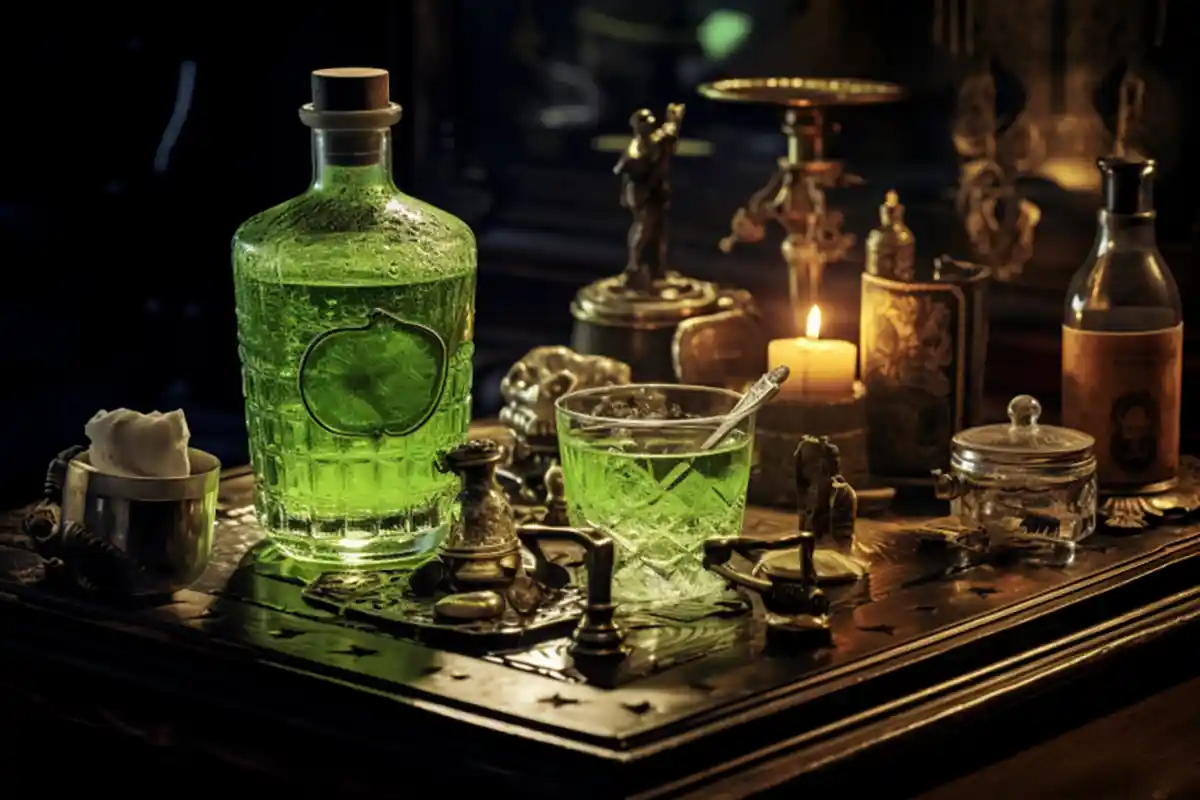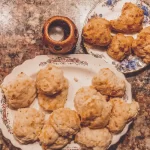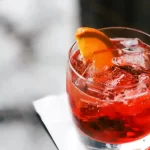Introduction
Absinthe, a bewitching elixir, has captivated the imaginations of artists, poets, and connoisseurs for centuries. With its vibrant green hue and an air of mystique, this anise-flavored spirit has an intriguing history that dates back to the 18th cenatury. In this article, we embark on a journey to explore the origins of absinthe, its rise to fame, its controversial reputation, and its enduring allure in the modern world.
The Mysterious Green Fairy
Absinthe is often referred to as the “Green Fairy” due to its striking emerald color and its reputation for inducing artistic inspiration and hallucinatory experiences. It holds a prominent place in the world of art and literature, with renowned figures like Vincent van Gogh, Oscar Wilde, and Ernest Hemingway being known enthusiasts. Let us delve deeper into the historical roots of this enigmatic drink.
A Historical Journey
3.1 The Birth of Absinthe
Absinthe was first concocted in the late 18th century by a French doctor named Pierre Ordinaire. Seeking a remedy for his patients, he blended wormwood, anise, fennel, and other botanicals to create a medicinal potion. Little did he know that his creation would become the centerpiece of a cultural phenomenon.
3.2 Rise in Popularity
During the 19th century, absinthe gained immense popularity, particularly in bohemian circles. It became the drink of choice for artists, writers, and intellectuals, who believed it could enhance their creativity and free their minds. The “Green Hour” became a cultural ritual, where absinthe flowed freely in the cafes of Paris, fostering spirited discussions and fostering artistic expression.
3.3 Controversy and Ban
The increasing popularity of absinthe raised concerns among authorities and the temperance movement. Accusations of absinthe-induced madness, criminal behavior, and health hazards started to circulate. In 1915, several countries, including France and the United States, banned the production and sale of absinthe. The “Green Fairy” went underground, becoming a forbidden elixir, adding to its allure.
The Myth and Legend
4.1 The Seductive Green Fairy
Absinthe’s association with the seductive allure of the “Green Fairy” gave rise to numerous myths and legends. It was believed that absinthe could transport drinkers to an altered state of consciousness, where the boundaries between reality and fantasy blurred. This mystique attracted artists and writers, who sought inspiration and sought to transcend the limitations of their minds.
4.2 Creative Inspiration or Madness?
While absinthe was hailed as a muse for creativity, it also faced accusations of causing madness and even addiction. The controversy surrounding absinthe reached its peak during the Belle Époque, with claims that thujone, a compound found in wormwood, was responsible for its hallucinogenic properties. However, modern scientific research has debunked these claims, revealing that the levels of thujone in absinthe were not significant enough to induce hallucinations.
The Ingredients and Process
5.1 Artemisia Absinthium: The Bitter Herb
At the heart of absinthe lies the bitter herb Artemisia absinthium, also known as wormwood. Wormwood contributes to the distinct flavor and aroma of absinthe and was believed to have medicinal properties. Other key ingredients include green anise, fennel, and various botanicals that add complexity to the final concoction.
5.2 Distillation and Maceration
The production of absinthe involves a meticulous process of distillation and maceration. The herbs and botanicals are macerated in alcohol, and the resulting mixture is then distilled. This process extracts the flavors and aromas, creating a potent spirit with a unique profile. The final product is typically bottled at a high proof and diluted with water when served.
The Ritual and Culture
6.1 The Absinthe Louche
Absinthe has its own ritualistic preparation and serving. The traditional method involves placing a sugar cube on a perforated spoon resting atop an absinthe glass. Ice-cold water is then slowly dripped over the sugar cube, gradually diluting the absinthe and releasing the flavors and aromas. This louche effect, where the liquid turns cloudy, adds to the sensory experience of enjoying absinthe.
6.2 Absinthe and the Artistic Movement
Absinthe became deeply intertwined with the artistic movements of the 19th and early 20th centuries. Artists and writers found solace and inspiration in the world of absinthe, believing that it could unlock their creativity. The Bohemian lifestyle associated with absinthe became synonymous with the pursuit of unconventional ideas, freedom, and non-conformity.
Modern Revival
7.1 Lifted Bans and New Regulations
In the late 20th century, the bans on absinthe started to be lifted. Scientific research debunked many of the misconceptions surrounding the drink, leading to revised regulations on its production and sale. Absinthe experienced a revival, with distillers around the world crafting their own interpretations of this timeless spirit.
7.2 Appreciating Absinthe Today
Today, absinthe enthusiasts can explore a wide range of absinthe varieties, each offering a unique flavor profile and character. From traditional recipes to modern interpretations, absinthe has found its place in the world of craft spirits. Tasting rooms and absinthe bars provide an opportunity for aficionados to immerse themselves in the history and flavors of this captivating drink.
Health and Effects
8.1 The Mythical Hallucinogenic Properties
One of the enduring myths surrounding absinthe is its hallucinogenic properties. While absinthe does contain trace amounts of thujone, the compound responsible for these claims, the levels are too low to induce hallucinations. Drinking absinthe in moderation is considered safe, and any effects experienced are more likely due to its high alcohol content rather than its botanical ingredients.
8.2 Understanding the Absinthe Effect
Absinthe’s reputation for causing a unique “absinthe effect” can be attributed to its high alcohol content and the interplay of flavors and aromas. As with any alcoholic beverage, excessive consumption can lead to intoxication and its associated effects. It is essential to enjoy absinthe responsibly, savoring its complexity and embracing the ritual while maintaining a balanced approach to consumption.
Conclusion
Absinthe, the captivating elixir steeped in history and myth, continues to enchant and inspire to this day. From its origins as a medicinal remedy to its association with artistic movements and creativity, absinthe has left an indelible mark on the world of spirits. Lifted bans and modern regulations have allowed its revival, inviting enthusiasts to experience the allure of the “Green Fairy” once more.
FAQs
- Is absinthe illegal?
- No, absinthe is legal in many countries, including the United States and European nations. However, regulations regarding thujone content and production methods may vary.
- Does absinthe cause hallucinations?
- No, the levels of thujone in absinthe are not significant enough to induce hallucinations. Any effects experienced are more likely due to its high alcohol content.
- How should I drink absinthe?
- Traditional absinthe preparation involves placing a sugar cube on a spoon over an absinthe glass and slowly dripping ice-cold water to dilute the drink. However, personal preferences may vary.
- Can absinthe enhance creativity?
- Absinthe has been associated with creativity and inspiration by many artists and writers. However, its effects on creativity are subjective and can vary from person to person.
- Where can I find absinthe?
- Absinthe can be found in select liquor stores, specialty shops, and online retailers. It is advisable to choose reputable brands and explore different styles and flavors.









